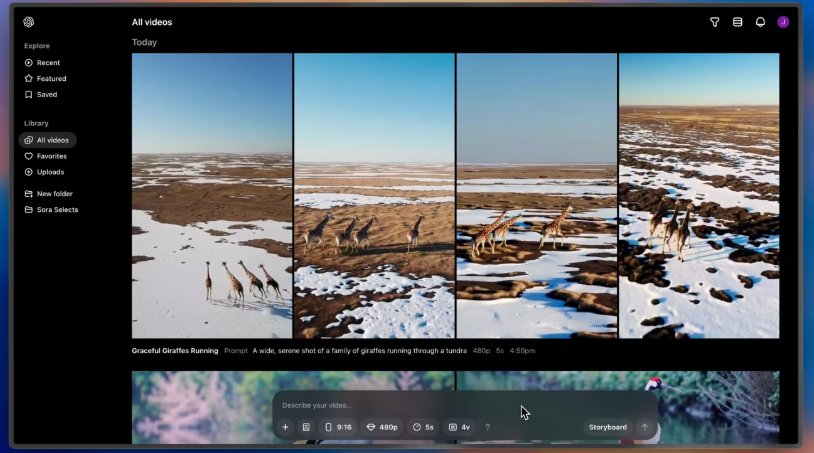 AI
AI
 AI
AI
 AI
AI
OpenAI today made its long-anticipated Sora video generation model available to ChatGPT Plus and ChatGPT Pro users.
The algorithm made its original debut in February as a preview release. The version of Sora that launched today, Sora Turbo, includes improvements that enable it to generate videos significantly faster.
ChatGPT Plus subscribers can generate 50 videos per month with maximum resolution of 720p and a duration of up to five seconds. Users of the ChatGPT Pro plan, which debuted last week and costs ten times more, can generate 500 videos per month. Clips may be up to 20 seconds in length with a maximum resolution of 1080p.
Users can access Sora through a new dedicated website. The interface includes several tools designed to ease the video generation workflow.
The starting point of a video project is a prompt with which the user specifies what the clip should depict. Customers can customize the style in which Sora generates frames, the length of the clip and other details. The model outputs the video it generates in one of three aspect ratios: widescreen, vertical and square.
OpenAI equipped Sora with the ability to switch between aspect ratios by training it on so-called spacetime patches. Those are units of data analogous to tokens, the information snippets that hold the text processed by a large language model. Spacetime patches provide a standardized way of storing the multimodal data processed by a video generation AI.
Similarly to how tokens can store multiple types of text including prose and code, spacetime patches can hold videos with multiple aspect ratios. OpenAI created the patches on which it trained Sora through a two-step process. It first turned each video from the training dataset into a latent space, an abstract mathematical representation that requires less storage space than the original file, and then split the latent space into smaller chunks. Each such chunk is a separate spacetime patch.
The technology also has other benefits besides allowing Sora to adjust its videos’ aspect ratios. OpenAI says that using spacetime patches allowed it to train Sora on videos variable durations, resolutions and aspect ratios, which streamlined the development process.
Alongside Sora’s aspect ratio settings, the company offers a set of more advanced controls for customizing videos.
Instead of entering a single prompt to create a clip, advanced users can split the video into segments and customize each segment one with a separate set of instructions. If one of the frames doesn’t meet their requirements, they can modify it by inputting a followup prompt. Moreover, Sora provides the ability to extract a frame and extend it to create an entirely new video.
A feature called Blend makes it possible to combine two clips into a new video. In another section of the Sora interface, Featured and Recent feeds display videos created by other users.
“OpenAI’s launch of Sora marks a transformative moment in AI-generated video technology,” Alon Yamin, co-founder and chief executive of AI-based text analysis platform Copyleaks, told SiliconANGLE in an email. “While it opens many doors for creative content, it resurfaces already pressing questions around generative AI about copyright, authenticity and the future of creative industries. As AI capabilities continue to evolve, it remains crucial to establish proper regulations, tools and overall best practices that safeguard authenticity and ensure ethical use in this rapidly changing landscape.”
The original version of Sora that OpenAI previewed in February could generate clips up to one minute in length. Given that the limit is 20 seconds on launch, it’s possible the company will update ChatGPT in the future to support longer videos.
It’s also possible Sora will become available in the business versions of ChatGPT, which don’t yet offer the model. If it brings Sora to those plans, OpenAI may decide to add features geared specifically toward professional video teams. For example, the company could add the ability create a shared content library that allows teams to centrally store the assets they create with Sora.
Support our mission to keep content open and free by engaging with theCUBE community. Join theCUBE’s Alumni Trust Network, where technology leaders connect, share intelligence and create opportunities.
Founded by tech visionaries John Furrier and Dave Vellante, SiliconANGLE Media has built a dynamic ecosystem of industry-leading digital media brands that reach 15+ million elite tech professionals. Our new proprietary theCUBE AI Video Cloud is breaking ground in audience interaction, leveraging theCUBEai.com neural network to help technology companies make data-driven decisions and stay at the forefront of industry conversations.